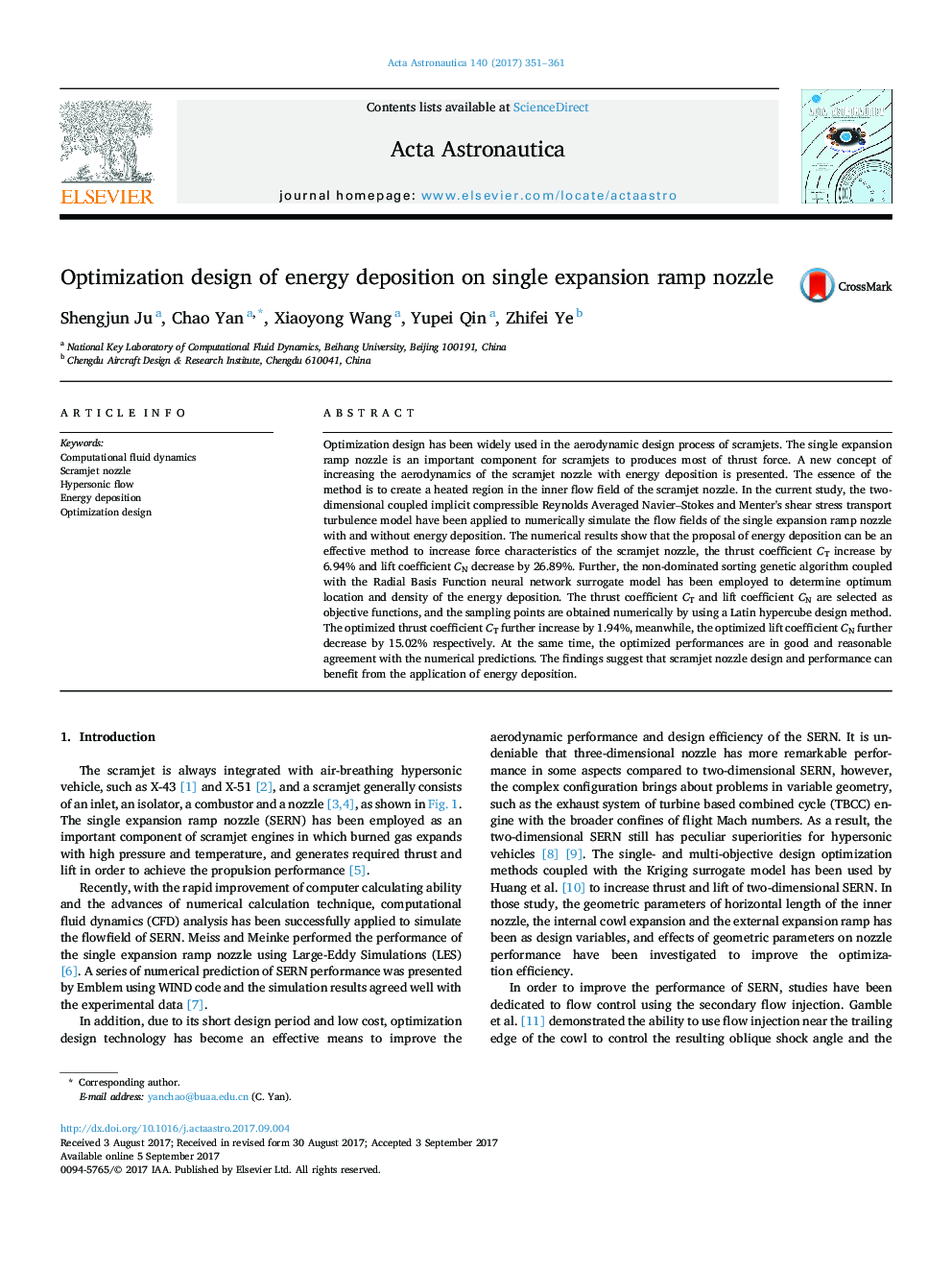| Article ID | Journal | Published Year | Pages | File Type |
|---|---|---|---|---|
| 5472124 | Acta Astronautica | 2017 | 11 Pages |
Abstract
Optimization design has been widely used in the aerodynamic design process of scramjets. The single expansion ramp nozzle is an important component for scramjets to produces most of thrust force. A new concept of increasing the aerodynamics of the scramjet nozzle with energy deposition is presented. The essence of the method is to create a heated region in the inner flow field of the scramjet nozzle. In the current study, the two-dimensional coupled implicit compressible Reynolds Averaged Navier-Stokes and Menter's shear stress transport turbulence model have been applied to numerically simulate the flow fields of the single expansion ramp nozzle with and without energy deposition. The numerical results show that the proposal of energy deposition can be an effective method to increase force characteristics of the scramjet nozzle, the thrust coefficient CT increase by 6.94% and lift coefficient CN decrease by 26.89%. Further, the non-dominated sorting genetic algorithm coupled with the Radial Basis Function neural network surrogate model has been employed to determine optimum location and density of the energy deposition. The thrust coefficient CT and lift coefficient CN are selected as objective functions, and the sampling points are obtained numerically by using a Latin hypercube design method. The optimized thrust coefficient CT further increase by 1.94%, meanwhile, the optimized lift coefficient CN further decrease by 15.02% respectively. At the same time, the optimized performances are in good and reasonable agreement with the numerical predictions. The findings suggest that scramjet nozzle design and performance can benefit from the application of energy deposition.
Related Topics
Physical Sciences and Engineering
Engineering
Aerospace Engineering
Authors
Shengjun Ju, Chao Yan, Xiaoyong Wang, Yupei Qin, Zhifei Ye,
